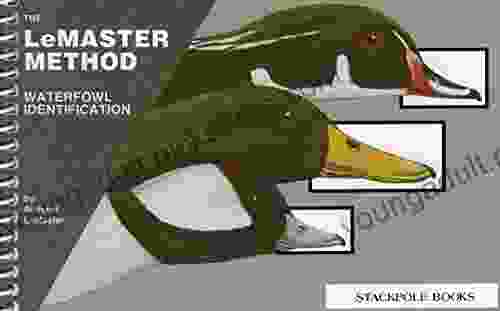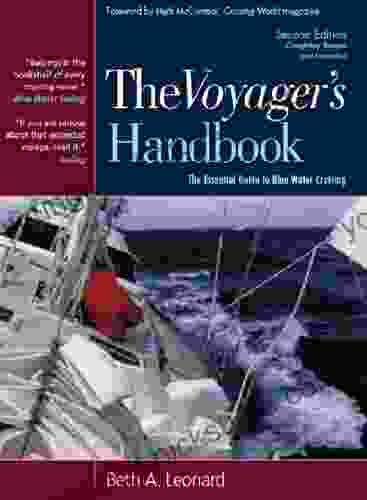Waterfowl Identification: The Lemaster Method

Waterfowl identification can be challenging, especially for beginners. But with the right tools and techniques, it can be a rewarding and enjoyable experience. One of the most popular and effective waterfowl identification methods is the Lemaster Method, developed by ornithologist Mark Lemaster.
4.4 out of 5
| Language | : | English |
| File size | : | 15832 KB |
| Text-to-Speech | : | Enabled |
| Screen Reader | : | Supported |
| Enhanced typesetting | : | Enabled |
| Print length | : | 76 pages |
The Lemaster Method is based on the idea that waterfowl can be identified by their size, shape, color, and behavior. By learning to recognize these key features, you can start to identify waterfowl with confidence.
Size and Shape
The first step in waterfowl identification is to determine the size and shape of the bird. Waterfowl come in a variety of sizes, from the tiny Green-winged Teal to the large Canada Goose. The shape of the bird can also help you identify it. For example, ducks have a round body and a short neck, while geese have a long body and a long neck.
Color
The color of the bird is another important identification feature. Waterfowl come in a wide range of colors, including brown, gray, black, white, and green. Some species, such as the Mallard, have distinctive color patterns that can help you identify them. For example, Mallards have a green head and a white ring around their neck.
Behavior
The behavior of the bird can also help you identify it. Waterfowl have a variety of behaviors, including swimming, diving, and flying. The way a bird behaves can tell you a lot about its species. For example, diving ducks, such as the Canvasback, are known for their ability to dive deep underwater to feed.
Putting It All Together
Once you have learned to recognize the key identification features of waterfowl, you can start to put it all together to identify birds in the field. The best way to learn is to practice. Spend time observing waterfowl in their natural habitat and try to identify them using the Lemaster Method. The more you practice, the better you will become at identifying waterfowl.
Tips for Waterfowl Identification
Here are a few tips for waterfowl identification:
- Use a field guide to help you identify waterfowl. A good field guide will provide you with information on the size, shape, color, and behavior of different waterfowl species.
- Observe waterfowl in their natural habitat. The best way to learn about waterfowl is to watch them in their natural habitat. This will give you a chance to see how they behave and interact with each other.
- Take your time. Don't try to rush the identification process. Take your time and observe the bird carefully before making an identification.
- Don't be afraid to ask for help. If you're having trouble identifying a bird, ask for help from a more experienced birdwatcher or ornithologist.
Waterfowl identification can be challenging, but it's made easier with the Lemaster Method. By learning to recognize the key identification features of waterfowl, you can start to identify birds with confidence. The more you practice, the better you will become at identifying waterfowl.
4.4 out of 5
| Language | : | English |
| File size | : | 15832 KB |
| Text-to-Speech | : | Enabled |
| Screen Reader | : | Supported |
| Enhanced typesetting | : | Enabled |
| Print length | : | 76 pages |
Do you want to contribute by writing guest posts on this blog?
Please contact us and send us a resume of previous articles that you have written.
 Fiction
Fiction Non Fiction
Non Fiction Romance
Romance Mystery
Mystery Thriller
Thriller SciFi
SciFi Fantasy
Fantasy Horror
Horror Biography
Biography Selfhelp
Selfhelp Business
Business History
History Classics
Classics Poetry
Poetry Childrens
Childrens Young Adult
Young Adult Educational
Educational Cooking
Cooking Travel
Travel Lifestyle
Lifestyle Spirituality
Spirituality Health
Health Fitness
Fitness Technology
Technology Science
Science Arts
Arts Crafts
Crafts DIY
DIY Gardening
Gardening Petcare
Petcare Jenna Helwig
Jenna Helwig Joan Jacobs Brumberg
Joan Jacobs Brumberg Jeffrey T Richelson
Jeffrey T Richelson Alberta Hawse
Alberta Hawse Linda Sivertsen
Linda Sivertsen Angel Burns
Angel Burns Rebecca Eanes
Rebecca Eanes Jim Saccomano
Jim Saccomano William D Lopez
William D Lopez Mtg Editorial Board
Mtg Editorial Board Jules Brown
Jules Brown Alessio Mangoni
Alessio Mangoni Warren Sande
Warren Sande George Megre
George Megre Tom Dymond
Tom Dymond Seth Lloyd
Seth Lloyd Tim Macwelch
Tim Macwelch Andy Dowsett
Andy Dowsett Eric Schmitz
Eric Schmitz Andy Peloquin
Andy Peloquin Laura Hillman
Laura Hillman Rod Powers
Rod Powers J D Swanson
J D Swanson Matthew D Dewar
Matthew D Dewar Emma Dalton
Emma Dalton Judith S Beck
Judith S Beck Jonathan Gottschall
Jonathan Gottschall Rick Vaive
Rick Vaive Leonard Lueras
Leonard Lueras Teresa Parker
Teresa Parker Tara Sim
Tara Sim Stephen Lynch
Stephen Lynch Louis Martin
Louis Martin Rebecca P Cohen
Rebecca P Cohen Milton Roth
Milton Roth Angela Smith
Angela Smith Robyn Wideman
Robyn Wideman Ruby Lang
Ruby Lang Jenny Smith
Jenny Smith Kevin Hunter
Kevin Hunter Stuart Lawrence
Stuart Lawrence Rashaun Johnson
Rashaun Johnson Peter Gibson
Peter Gibson Harry Fairhead
Harry Fairhead Jeff Mach
Jeff Mach Tea Rozman Clark
Tea Rozman Clark Richard G Brown
Richard G Brown Aaron Wilson
Aaron Wilson Devaki Lakshmi
Devaki Lakshmi Kat Anderson
Kat Anderson George E Hein
George E Hein Beth A Leonard
Beth A Leonard Samir P Desai
Samir P Desai Tania N Shah
Tania N Shah Jim Posewitz
Jim Posewitz Robin Yocum
Robin Yocum Angela Eckhoff
Angela Eckhoff Michael Tomasello
Michael Tomasello Kim Dragoner
Kim Dragoner Joe Berardi
Joe Berardi Christian Heath
Christian Heath Mark Remy
Mark Remy David Graeber
David Graeber Jamie Kuykendall
Jamie Kuykendall Elizabeth Kaledin
Elizabeth Kaledin Chris Chelios
Chris Chelios Irene Gut Opdyke
Irene Gut Opdyke Scott Turner
Scott Turner Jon Ronson
Jon Ronson Jennifer Bohnet
Jennifer Bohnet Mark Shepherd
Mark Shepherd David Herres
David Herres Jodi Shabazz
Jodi Shabazz Germano Dalcielo
Germano Dalcielo Danil Zburivsky
Danil Zburivsky Stephanie Land
Stephanie Land Oliver Burkeman
Oliver Burkeman Mark Lester
Mark Lester Margaret Visser
Margaret Visser S L Macgregor Mathers
S L Macgregor Mathers Jordan Summers
Jordan Summers Bradley Charbonneau
Bradley Charbonneau Karen Elliott House
Karen Elliott House Shalabh Aggarwal
Shalabh Aggarwal Bob Gordon
Bob Gordon Dwight E Neuenschwander
Dwight E Neuenschwander Brian Cain
Brian Cain Ryan D Agostino
Ryan D Agostino Peter Townsend
Peter Townsend Andy Farrell
Andy Farrell W Todd Woodard
W Todd Woodard D M Davis
D M Davis Rufus Estes
Rufus Estes Rachel Connelly
Rachel Connelly Afra J Zomorodian
Afra J Zomorodian Robert Dudley
Robert Dudley Shane O Mara
Shane O Mara Kathryn Miles
Kathryn Miles Robin Benway
Robin Benway Susan Burton
Susan Burton Third Edition Kindle Edition
Third Edition Kindle Edition Kent David Kelly
Kent David Kelly Julia Reed
Julia Reed Leanne Ely
Leanne Ely Angela Thayer
Angela Thayer Robert Urban
Robert Urban Mary Pipher
Mary Pipher Rawdon Wyatt
Rawdon Wyatt Richard Lee Byers
Richard Lee Byers Bradley T Erford
Bradley T Erford Stephen Grossberg
Stephen Grossberg Peter Finch
Peter Finch Wynne Foster
Wynne Foster Jay Griffiths
Jay Griffiths Bret A Moore
Bret A Moore Robert Lindsay
Robert Lindsay Mirabai Starr
Mirabai Starr Joshua Clark
Joshua Clark Margaret Jordan Halter
Margaret Jordan Halter Stephen Jungmann
Stephen Jungmann Richard Bate
Richard Bate Stephen Cheney
Stephen Cheney Elizabeth Foss
Elizabeth Foss Mark W Steege
Mark W Steege Avinash Navlani
Avinash Navlani Stefanie K Johnson
Stefanie K Johnson Sandy Tolan
Sandy Tolan Neil Hawkesford
Neil Hawkesford G K Derosa
G K Derosa Tom Allen
Tom Allen Rebecca Boggs Roberts
Rebecca Boggs Roberts Pete Dunne
Pete Dunne Capn Fatty Goodlander
Capn Fatty Goodlander Ray Walker
Ray Walker Mark Rosenman
Mark Rosenman Ashley P Martin
Ashley P Martin Steve Hindman
Steve Hindman David Goodman
David Goodman William E Hearn
William E Hearn Neveen Musa
Neveen Musa Kim Foley Mackinnon
Kim Foley Mackinnon Massimo Florio
Massimo Florio Natalie Rhodes
Natalie Rhodes Dean Beaumont
Dean Beaumont Angel Millar
Angel Millar Tovah Feldshuh
Tovah Feldshuh Nicholas D Kristof
Nicholas D Kristof Angelo Chiari
Angelo Chiari T L Payne
T L Payne Judith Hoare
Judith Hoare Lisa Marie Mercer
Lisa Marie Mercer Greg Prato
Greg Prato Murtaza Haider
Murtaza Haider Karen Sternheimer
Karen Sternheimer Pete Sampras
Pete Sampras Jessica Wolstenholm
Jessica Wolstenholm Scott Meyer
Scott Meyer Richard L Sites
Richard L Sites Mark Synnott
Mark Synnott Rachel Hutt Phd
Rachel Hutt Phd Lee Cronk
Lee Cronk Karl Beecher
Karl Beecher Marilyn Burgos
Marilyn Burgos Andy Mitchell
Andy Mitchell Joyce Yang
Joyce Yang Mometrix
Mometrix Katrina Cope
Katrina Cope Robin Ray Green
Robin Ray Green Chris Santella
Chris Santella Ruth Benedict
Ruth Benedict James Quinn
James Quinn Eli Wilson
Eli Wilson Ken Dryden
Ken Dryden Jeffrey Bernstein
Jeffrey Bernstein Dave Smith
Dave Smith Roger Craig
Roger Craig Howard Davis
Howard Davis Rafael Gordillo Naranjo
Rafael Gordillo Naranjo Rob Willson
Rob Willson Gillian Price
Gillian Price Jonah Lehrer
Jonah Lehrer Dan Heath
Dan Heath Cynthia Nims
Cynthia Nims Joy Williams
Joy Williams Sandra Steingraber
Sandra Steingraber Matt Vincent
Matt Vincent Viviana Altuve
Viviana Altuve George Noory
George Noory Meg Long
Meg Long Cory Mortensen
Cory Mortensen Siena Cherson Siegel
Siena Cherson Siegel Sir Edmund Hillary
Sir Edmund Hillary Rosie Daley
Rosie Daley James M Johnston
James M Johnston Barak Ariel
Barak Ariel Jorge Ramos Mizael
Jorge Ramos Mizael Johnson Egonmwan
Johnson Egonmwan Angela Leslee
Angela Leslee Shreya Ramachandran
Shreya Ramachandran Kevin J Gaston
Kevin J Gaston Douglas Henderson Jr
Douglas Henderson Jr Kristen Jervis Cacka
Kristen Jervis Cacka Nicholas Epley
Nicholas Epley Baby Professor
Baby Professor George Johnson
George Johnson Joseph Mazur
Joseph Mazur Mike Chambers
Mike Chambers Thais Nye Derich
Thais Nye Derich Robert Zubek
Robert Zubek Liv Ryan
Liv Ryan Petros Efthymiou
Petros Efthymiou Elizabeth Hunter
Elizabeth Hunter Jo May
Jo May Donna Mott
Donna Mott Patrick Ejeke
Patrick Ejeke R E Burrillo
R E Burrillo Tim Hannigan
Tim Hannigan Dawn Griffiths
Dawn Griffiths Sam Fury
Sam Fury Tina Nelson
Tina Nelson Tovar Cerulli
Tovar Cerulli Violet White
Violet White William Bryant Logan
William Bryant Logan Lutz Hanseroth
Lutz Hanseroth T R Fehrenbach
T R Fehrenbach Derek M Steinbacher
Derek M Steinbacher Daniel Friedmann
Daniel Friedmann Jane M Healy
Jane M Healy Ron Douglas
Ron Douglas Dave Gray
Dave Gray Janet Menzies
Janet Menzies Wayne Mcghie
Wayne Mcghie Ellen J Langer
Ellen J Langer Joel J Lerner
Joel J Lerner United States Government Us Army
United States Government Us Army Charney Herst
Charney Herst Emily Souder
Emily Souder Samuel B Green
Samuel B Green Patrick Pickens
Patrick Pickens Caspar Melville
Caspar Melville Mercedes Pollmeier
Mercedes Pollmeier Jodi Picoult
Jodi Picoult Yvonne Choquet Bruhat
Yvonne Choquet Bruhat Jeffrey Thurston
Jeffrey Thurston Otto Rahn
Otto Rahn Lucy Postgate
Lucy Postgate Latonya J Trotter
Latonya J Trotter Judea Pearl
Judea Pearl Ingrid S Clay
Ingrid S Clay Kristina Statler
Kristina Statler Keith Crowley
Keith Crowley Andy Jurinko
Andy Jurinko Tigran Bagdasaryan
Tigran Bagdasaryan Thomas Gilovich
Thomas Gilovich Adam Skolnick
Adam Skolnick Tim Larkin
Tim Larkin Richard Hibshman
Richard Hibshman Rebecca Solnit
Rebecca Solnit Kyle Graves
Kyle Graves Diana Nyad
Diana Nyad Jessica Jung
Jessica Jung Chuck Weikert
Chuck Weikert Andy Schell
Andy Schell Catherine Mccord
Catherine Mccord Nick Bradley
Nick Bradley Jenna Blough
Jenna Blough Ryan Beck
Ryan Beck Stacy Mccullough
Stacy Mccullough Tristan Higbee
Tristan Higbee Humberto G Garcia
Humberto G Garcia Kenneth R Ginsburg
Kenneth R Ginsburg Bob Clouser
Bob Clouser Rodney Paul
Rodney Paul Michael V Uschan
Michael V Uschan L S Boos
L S Boos Marie Myung Ok Lee
Marie Myung Ok Lee Guy Evans
Guy Evans Mandee Heller Adler
Mandee Heller Adler Michael Driscoll
Michael Driscoll Robyn Ryle
Robyn Ryle Robert Kirk
Robert Kirk Angela Stancar Johnson
Angela Stancar Johnson Bernd Heinrich
Bernd Heinrich Angela C Wu
Angela C Wu Rebecca Serle
Rebecca Serle Diana Winston
Diana Winston Marie Brennan
Marie Brennan Dan Ariely
Dan Ariely Rachel Kowert
Rachel Kowert Ellen Frank
Ellen Frank Robyn Harding
Robyn Harding Warren St John
Warren St John Paul Cobley
Paul Cobley Angelo Lowery
Angelo Lowery Carol Ann Gillespie
Carol Ann Gillespie Chanel Craft Tanner
Chanel Craft Tanner Phil Burt
Phil Burt Christopher O Kennon
Christopher O Kennon Angeline Boulley
Angeline Boulley Kate Le Roux
Kate Le Roux Chip Heath
Chip Heath Robb Manning
Robb Manning Roland A Boucher
Roland A Boucher Christina Reese
Christina Reese Tirzah Price
Tirzah Price Michele Borba
Michele Borba Belinda Norton
Belinda Norton Bill Schneider
Bill Schneider Michael Anthony
Michael Anthony Dave Duncan
Dave Duncan Martin Volken
Martin Volken Hourly History
Hourly History Emily Nielson
Emily Nielson Jeanne Godfrey
Jeanne Godfrey Frank Deford
Frank Deford Ashley Rickards
Ashley Rickards John Geiger
John Geiger Harold S Koplewicz
Harold S Koplewicz Andy Puddicombe
Andy Puddicombe Frederick Aardema
Frederick Aardema Richard A Muller
Richard A Muller Christian Wiggins
Christian Wiggins Lynn Palm
Lynn Palm Cheryl Alkon
Cheryl Alkon Nathaniel Rich
Nathaniel Rich Nicole Smith
Nicole Smith Daddilife Books
Daddilife Books Sylvester Nemes
Sylvester Nemes Lynn Lyons
Lynn Lyons Forrest Maready
Forrest Maready Tj Faultz
Tj Faultz Jason Hogan
Jason Hogan Miles Olson
Miles Olson Walter Beede
Walter Beede John B Nici
John B Nici Christopher Nyerges
Christopher Nyerges Donald R Prothero
Donald R Prothero Gregory J Davenport
Gregory J Davenport David C Keehn
David C Keehn Ben Campbell
Ben Campbell Donna Helen Crisp Jd Msn Rn Pmhcns Bc
Donna Helen Crisp Jd Msn Rn Pmhcns Bc Charlotte Klaar Phd
Charlotte Klaar Phd Lawrence Goldstone
Lawrence Goldstone Marc Charles
Marc Charles Madeleine Roux
Madeleine Roux Lois A Ritter
Lois A Ritter Lindsay Ford
Lindsay Ford Wendy Rosenoff
Wendy Rosenoff Jeffrey Lee
Jeffrey Lee Rebecca Hemmings
Rebecca Hemmings Joe Peta
Joe Peta Jeff Fleischer
Jeff Fleischer Serena B Miller
Serena B Miller Jerry Toner
Jerry Toner David E Jones
David E Jones Keylee C Hargis
Keylee C Hargis Stefan Hunziker
Stefan Hunziker Angelina J Steffort
Angelina J Steffort Sharon Strand Ellison
Sharon Strand Ellison Stewart Shapiro
Stewart Shapiro Angelo Tropea
Angelo Tropea Andy Crowe
Andy Crowe David Kinney
David Kinney Alex Wolf
Alex Wolf Lin Wellford
Lin Wellford Muako Maepa
Muako Maepa Laura Bogen
Laura Bogen Arlin Smith
Arlin Smith William Ayers
William Ayers Eliot Schrefer
Eliot Schrefer Robert E Stake
Robert E Stake Ben Ehrenreich
Ben Ehrenreich Margaret M Quinlan
Margaret M Quinlan Barry Pickthall
Barry Pickthall Cap N Fatty Goodlander
Cap N Fatty Goodlander Schoolhouse Heaven
Schoolhouse Heaven Nicholas Jubber
Nicholas Jubber Jeremy Klaff
Jeremy Klaff Dennis Rainey
Dennis Rainey Troy A Hill
Troy A Hill Tim Thayne
Tim Thayne Hajime Isayama
Hajime Isayama Yuu Tanaka
Yuu Tanaka Caryl Say
Caryl Say Raynor Winn
Raynor Winn Ron Jeffries
Ron Jeffries Carlos Acevedo
Carlos Acevedo Christina Hillsberg
Christina Hillsberg Kevin Thomas
Kevin Thomas Tiara Mcclure
Tiara Mcclure Connie Schultz
Connie Schultz Erin Moulton
Erin Moulton Deborah Wall
Deborah Wall Ryan Bow
Ryan Bow Cate Tiernan
Cate Tiernan Sam Bleakley
Sam Bleakley Andy Tyson
Andy Tyson K Moriyasu
K Moriyasu Fredrik Backman
Fredrik Backman Mark Kernion
Mark Kernion Kim West
Kim West Mark Verstegen
Mark Verstegen Andrea Lankford
Andrea Lankford Gerard Siggins
Gerard Siggins Stephen Rea
Stephen Rea Bob Swope
Bob Swope Scott Stillman
Scott Stillman Manik Joshi
Manik Joshi Ted Sandling
Ted Sandling Donald N Yates
Donald N Yates Jim Prime
Jim Prime Kathy Hoopmann
Kathy Hoopmann Emiko Jean
Emiko Jean Anna Rashbrook
Anna Rashbrook Thomas Golf
Thomas Golf Dhonielle Clayton
Dhonielle Clayton Miranda Green
Miranda Green Kristen S Kurland
Kristen S Kurland Colby Coombs
Colby Coombs Kelly Corrigan
Kelly Corrigan Mark J Musser
Mark J Musser Richard Lemaster
Richard Lemaster Karl E Peace
Karl E Peace Rodney Castleden
Rodney Castleden Jay Matthews
Jay Matthews Tim O Connor
Tim O Connor Lidia Bastianich
Lidia Bastianich Israelin Shockness
Israelin Shockness John Sonmez
John Sonmez Jessica Nordell
Jessica Nordell Carlo Rovelli
Carlo Rovelli John Samuel Barnett
John Samuel Barnett Chef Maggie Chow
Chef Maggie Chow Mark Wells
Mark Wells Dr Eva Beaulieu
Dr Eva Beaulieu Ariel Henley
Ariel Henley Ed Stafford
Ed Stafford Lisa Preston
Lisa Preston Elly Molina
Elly Molina Sabbithry Persad Mba
Sabbithry Persad Mba Mitch Horowitz
Mitch Horowitz Howell Raines
Howell Raines Kathy Freston
Kathy Freston Shenila Khoja Moolji
Shenila Khoja Moolji Gary B Meisner
Gary B Meisner Florian Freistetter
Florian Freistetter Patrick M Lencioni
Patrick M Lencioni Madison Lee
Madison Lee Scott Alan Johnston
Scott Alan Johnston Kari Marie Norgaard
Kari Marie Norgaard Johnny Molloy
Johnny Molloy Joseph Phillips
Joseph Phillips Tom Chatfield
Tom Chatfield Eugene P Northrop
Eugene P Northrop Erich Fromm
Erich Fromm M J Fievre
M J Fievre Keith Elliot Greenberg
Keith Elliot Greenberg Ben Bleiweiss
Ben Bleiweiss Nikki Ace
Nikki Ace John C Maxwell
John C Maxwell Tanya Lee Stone
Tanya Lee Stone
Light bulbAdvertise smarter! Our strategic ad space ensures maximum exposure. Reserve your spot today!

 Beau CarterUnlock the World of Computer Programming: A Comprehensive Guide for Kids and...
Beau CarterUnlock the World of Computer Programming: A Comprehensive Guide for Kids and... Italo CalvinoFollow ·17.3k
Italo CalvinoFollow ·17.3k Boris PasternakFollow ·16.1k
Boris PasternakFollow ·16.1k Levi PowellFollow ·13.8k
Levi PowellFollow ·13.8k Thomas MannFollow ·16.7k
Thomas MannFollow ·16.7k Alec HayesFollow ·12.5k
Alec HayesFollow ·12.5k Clay PowellFollow ·5.5k
Clay PowellFollow ·5.5k Neil ParkerFollow ·19.8k
Neil ParkerFollow ·19.8k Josh CarterFollow ·12.9k
Josh CarterFollow ·12.9k
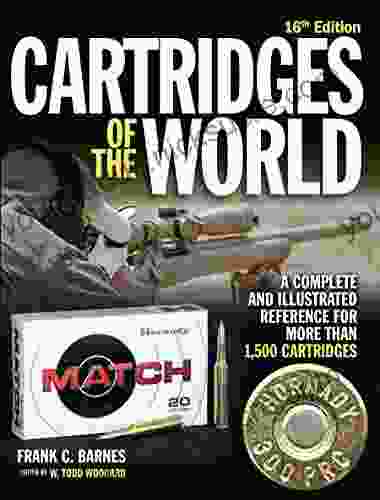
 Devon Mitchell
Devon MitchellDelve into the Comprehensive World of Cartridges: A...
In the realm of firearms, cartridges stand...
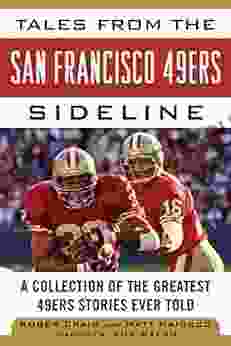
 Joseph Conrad
Joseph ConradTales From The San Francisco 49ers Sideline: A Look...
The San Francisco 49ers are one of the most...

 Ervin Bell
Ervin BellArcGIS Desktop 10: A Comprehensive GIS Tutorial for...
Geographic information...

 Reed Mitchell
Reed MitchellPhysiology Pretest Self Assessment And Review 14th...
Accurately gauge your physiology knowledge and...

 Devin Ross
Devin RossLost At Sea: The Unbelievable True Story of the Jon...
In 2009, journalist Jon Ronson set out to...
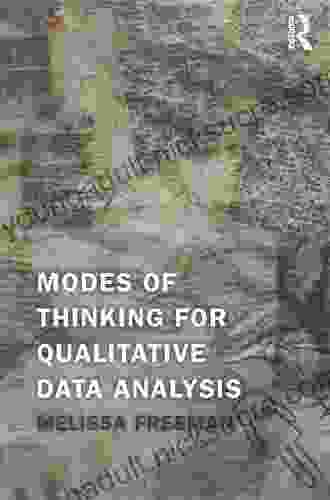
 Shane Blair
Shane BlairModes of Thinking for Qualitative Data Analysis
Qualitative data analysis is a complex...
4.4 out of 5
| Language | : | English |
| File size | : | 15832 KB |
| Text-to-Speech | : | Enabled |
| Screen Reader | : | Supported |
| Enhanced typesetting | : | Enabled |
| Print length | : | 76 pages |


